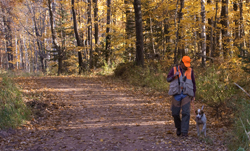Birds make bird dogs
It might seem like a cliché but the message still isn’t out to everyone who owns a bird dog.
Birds make bird dogs.
To wit: A couple brought their male German shorthaired pointer puppy to our kennel for an evaluation. They thought it needed to be taught obedience—especially heel and whoa—to be ready for the fall hunting season. When I asked if the dog had been exposed to birds and gunfire, both nodded enthusiastically.
But when I threw a freshly killed pigeon, he sidled up to it and sniffed from as far away as he could. And when I threw a couple live pigeons on the ground a short distance from the dog, he showed mild interest and little chase when they flew. I inquired further about the bird exposure and the couple replied, “He has seen three birds at the game farm and one was shot over with a shotgun!”
Maybe their expectations are different than mine, but I want a puppy that lives to find birds, enthusiastically busts cover, heartily gives chase to anything that flies and gets excited at the sound of gunfire. I want a young dog that is bold, confident and self-assured. No two dogs are alike and some are naturally more confident and birdy than others, but my experience is that developing a puppy to the level of desire I want does not happen in three or four field outings, much less three or four bird contacts!
We spend hours and hours working puppies in natural cover either on foot, from a four-wheeler or on horseback. The puppies experience woods, creeks, song birds, tall grass, short grass, cattle, fences and all other things they will be exposed to in hunting situations. Most importantly, we put out enough birds so they have several contacts each outing. We want to develop their desire for hunting and finding birds as much as possible. As they start finding and chasing the birds, we shoot a soft blank pistol and work up to a 20-gauge shotgun.
After a number of experiences like that, most will start to point and hold long enough for us to get to them. At this time, we stroke their backs and tail and push them towards the bird. This handling is very important as it increases their intensity and lets them know we approve. When they break and chase we give a hoot and shoot the gun again.
As they point long enough for us to flush the bird, we will try and kill a bird or two for them. And that is a huge reward as nothing fires up a young dog more. It is important not to overdo this stage, though. Two or three times a week at first and once or twice as they come to understand will be enough.
A young dog developed in this manner will have the foundation necessary to progress to more serious training and be well on its way to becoming a bird dog. Heck, you might even kill some birds during its first hunting season!




